-
As the drought worsens, California’s conservation measures fall short
As the drought worsens, California is doing a poor job of conserving water. Water use has declined by only 2.8 percent in February compared with the same time in 2013. Some Southern Californians are actually increasing their water use. “These are sobering statistics — disheartening statistics, considering how hard we have been working on this,” said Felicia Marcus, chairwoman of California’s water control board, which reported the findings. “We are very concern about these numbers. They highlight the need for further action.”
-
-
NOAA employee charged with giving information on vulnerabilities of U.S. dams to China
A National Weather Service (NOAA) employee is being charged by the Federal Bureau of Investigations (FBI) with stealing sensitive infrastructure data from a U.S. Army Corps of Engineers database and handing it off to a Chinese government official in Beijing.The dam database is considered sensitive data and has also been compromised by Chinese hackers in 2013, as part of a covert Chinese government operation.The database information includes details on the location, type, storage, capacity, year of construction, and other crucial details helpful in the event of any coordinated strike.
-
-
China steals confidential data on the vulnerabilities of major U.S. dams
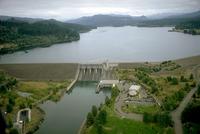
The U.S. Army Corps of Engineers’ National Inventory of Dams(NID) contains critical information on the vulnerabilities of the roughly 8,100 major dams in the United States. Between January and April 2013, U.S. intelligence agencies spotted several attempts by China’s People’s Liberation Army (PLA) cyber-espionage unit to access the NID database and steal its contents. On Monday, National Weather Service (NWS) hydrologist Xiafen “Sherry” Chen, 59 was arrested for allegedly breaching the NID security and stealing confidential data on U.S. dam vulnerabilities. The Justice Department has raised the alarm over multiple attempts by China to steal data on U.S. critical infrastructure through individuals with privileged access to confidential databases.
-
-
Design standards for dams are effective for earthquakes: study
There has long been a concern among civil engineers that dams could fail days or weeks after an earthquake, even if no immediate evidence of a problem surfaced. Their concern has focused on possible cracks at the interface between the concrete section of a dam and the soil embankments at the dam’s sides, and on how the soil filters nestled amidst the embankments would fare. Soil filters consist of coarser grain soils than the soil used in the dam’s impervious core, and their purpose in the event of a crack in the soil, is to prevent the finer core soil particles from rapidly eroding and flushing through the filter. Since soil filters were instituted, their design standards have been based on experimental studies without detailed and validated computer modeling of the soil grains — until now.
-
-
Assessing the damage of runaway barges at the Illinois River lock and dam
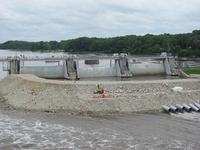
It takes a synchronized lock and dam system — operating like a motorized flight of stairs on the Illinois River, using gravity to move the water — to maintain a minimum depth for boat traffic. A disastrous domino effect occurred on 19 April 2013, when heavy rain and runoff, strong winds, and river currents resulted in seven unmoored barges crashing into the dam at Marseilles, Illinois. Researchers say that the system of locks and dams on the Illinois River is vulnerable to changing climate and weather extremes. These more frequent and unpredictable conditions can cause shipping accidents, damage to lock and dam systems, streambank erosion, shipping accidents, and local flooding.
-
-
Water reservoirs for hydroelectric dams are sources of greenhouse gas emissions
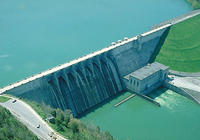
The large reservoirs of water behind the world’s 50,000 large dams are a known source of methane. Like carbon dioxide, methane is one of the greenhouse gases which trap heat near Earth’s surface and contribute to global warming. Methane, however, has a warming effect twenty-five times more powerful than carbon dioxide. The methane comes from organic matter in the sediments that accumulate behind dams.
-
-
Dams play an important role in water pollution control
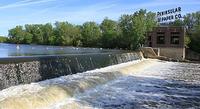
Small dams, reservoirs and ponds trap water pollution, which provides an important benefit to water resources. This is especially relevant in agricultural lands of the Midwest U.S., where there are lots of small, but aging, dams.
-
-
Changes to levee system would reduce storm surge risks to New Orleans: study
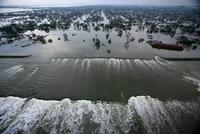
Historically, the design of Southeast Louisiana’s hurricane flood risk reduction system has hinged on raising and adding levees in response to river or hurricane events that impact the region. A new study shows that the lowering of man-made levees along 55-kilometer section of the west bank of the Lower Plaquemines river to their natural state, to allow storm surge to partially pass across the Mississippi River, will decrease storm surge upriver toward New Orleans.
-
-
China’s Mekong River dams undermine neighbors’ economies, food production
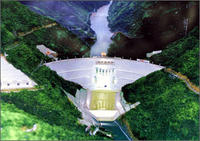
Five Chinese dams on the Mekong River’s upper portions have caused rapid changes in water level, and other adverse effects, downstream, especially in Vietnam, Cambodia, Thailand, and Laos, where millions of people rely on the river for water, food, and transportation
-
-
Dutch test-levee experiment helps strengthen U.S. levees, dams
In the United States, the national flood-control infrastructure is aging and its structural health is deteriorating; the system comprises more than 5,600 km of levees, and 43 percent of the U.S. population lives in counties with levees designed to provide some level of protection from flooding; some of these levees are as old as 150 years; in 2009, the American Society of Civil Engineers Report Card for America’s Infrastructure gave the condition of the nation’s dams a grade of D, and levees a grade of D-minus; an dam-strength experiment in the Netherland helps engineers collect data to validate new suite of technologies for assessing the health of levees and dams
-
-
New earthquake assessment finds increased risk for Washington Dams
Central Washington state has always been considered low risk for earthquakes back when big hydropower dams went up on the Columbia River many decades ago; a recently completed seismic hazard assessment, however, shows that there is a much greater earthquake potential for the area than previously thought; now, dam owners have to figure out whether their dams can hold up to an earthquake; if retrofits are needed, they could cost hundreds of millions of dollars
-
-
Local officials oppose “unacceptable” levee ratings
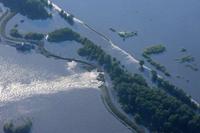
In recent years as part of an effort to bolster the nation’s flood protection infrastructure, the Army Corps of Engineers has analyzed and declared more than 200 levee systems across the country as “unacceptable,” resulting in a firestorm of criticism from local officials
-
-
Cyber attacks on U.S. are becoming more lethal
The head of the U.S. Cyber Command said that cyber attacks on the United States are escalating from large-scale theft and disruption of computer operations to more lethal attacks that destroy systems and physical equipment
-
-
Virginia quake highlights overlooked danger: decrepit dams
Tuesday’s Virginia earthquake raised fears that a Fukushima scenario would unfold somewhere on the East Coast, but experts say that earthquake pose a much greater threat: breaching decrepit dams; of the 85,000 dams in the United States, 4,000 are seriously unsafe or deficient — and of those, 1,800 are located in areas where a breach would cause grave damage to life and property
-
-
China admits to critical flaws at world’s largest dam
Last week, the Chinese government made a rare announcement and publicly admitted that there were critical problems at the Three Gorges dam, the world’s largest hydroelectric dam, lending support to the growing opposition to future dam projects; with the approval of Chinese Premier Wen Jiabao, the country’s second in command, last Thursday the State Council announced that the Three Gorges dam had been plagued by a series of problems “urgently in need of resolution”; problems include ecological deterioration, geological disasters, and the lingering uncertain status of more than one million people displaced by the dam; this is the first time such a high-ranking government official has publicly acknowledged the dam’s problems
-
- All
- Regional
- Water
- Biometrics
- Borders/Immig
- Business
- Cybersecurity
- Detection
- Disasters
- Government
- Infrastructure
- International
- Public health
- Public Safety
- Communication interoperabillity
- Emergency services
- Emergency medical services
- Fire
- First response
- IEDs
- Law Enforcement
- Law Enforcement Technology
- Military technology
- Nonlethal weapons
- Nuclear weapons
- Personal protection equipment
- Police
- Notification /alert systems
- Situational awareness
- Weapons systems
- Sci-Tech
- Sector Reports
- Surveillance
- Transportation
Advertising & Marketing: advertise@newswirepubs.com
Editorial: editor@newswirepubs.com
General: info@newswirepubs.com
2010-2011 © News Wire Publications, LLC News Wire Publications, LLC
220 Old Country Road | Suite 200 | Mineola | New York | 11501
Permissions and Policies
Editorial: editor@newswirepubs.com
General: info@newswirepubs.com
2010-2011 © News Wire Publications, LLC News Wire Publications, LLC
220 Old Country Road | Suite 200 | Mineola | New York | 11501
Permissions and Policies
